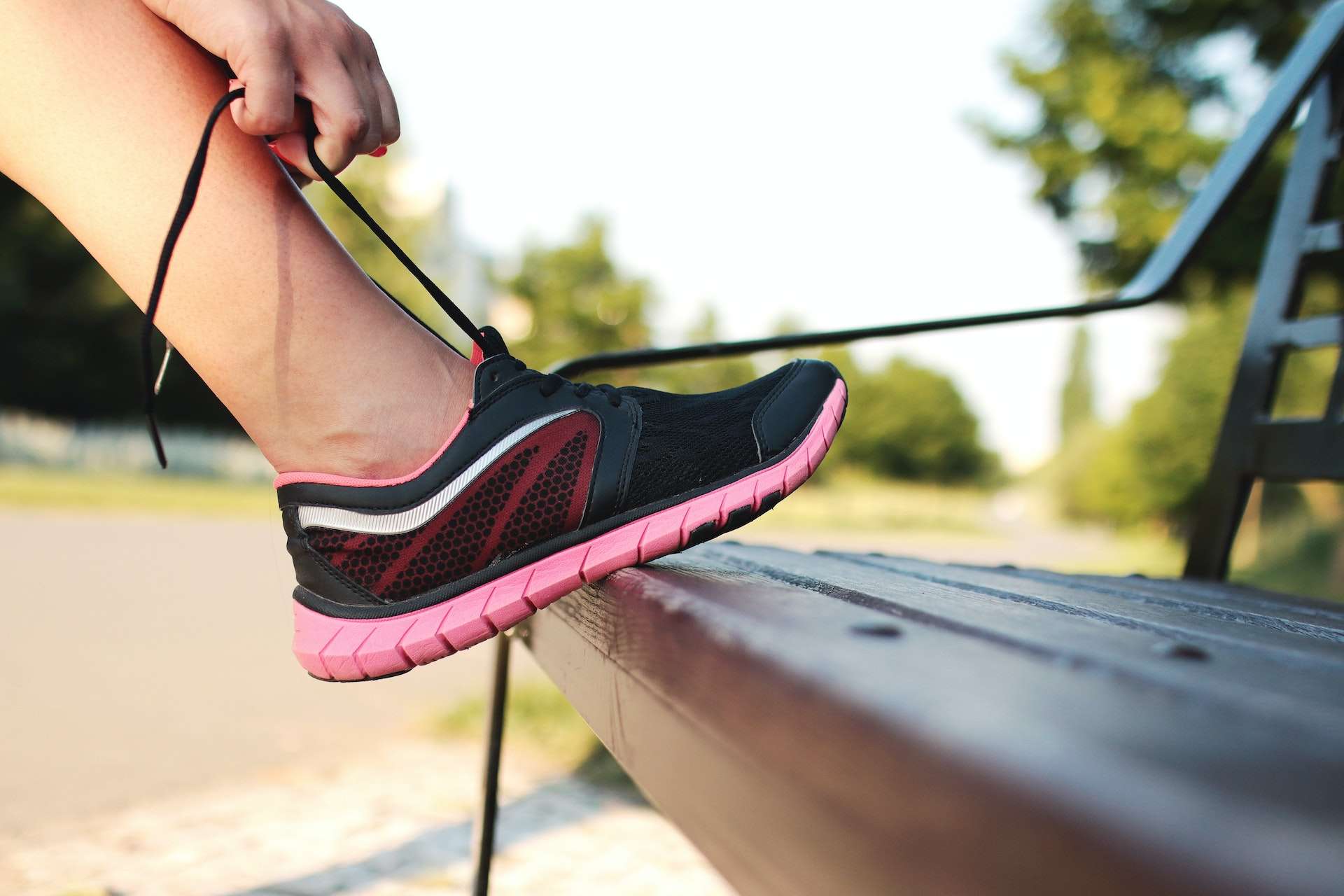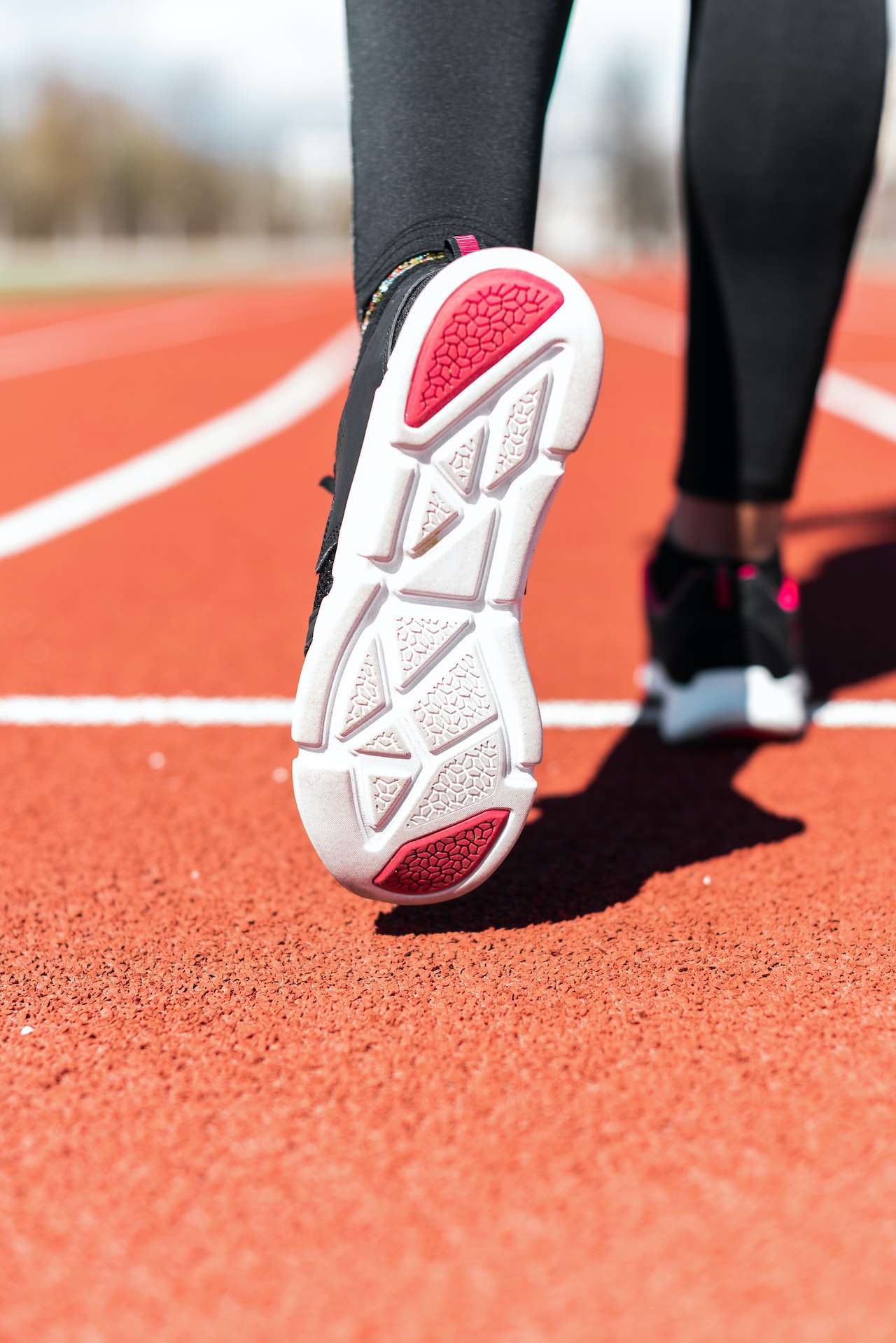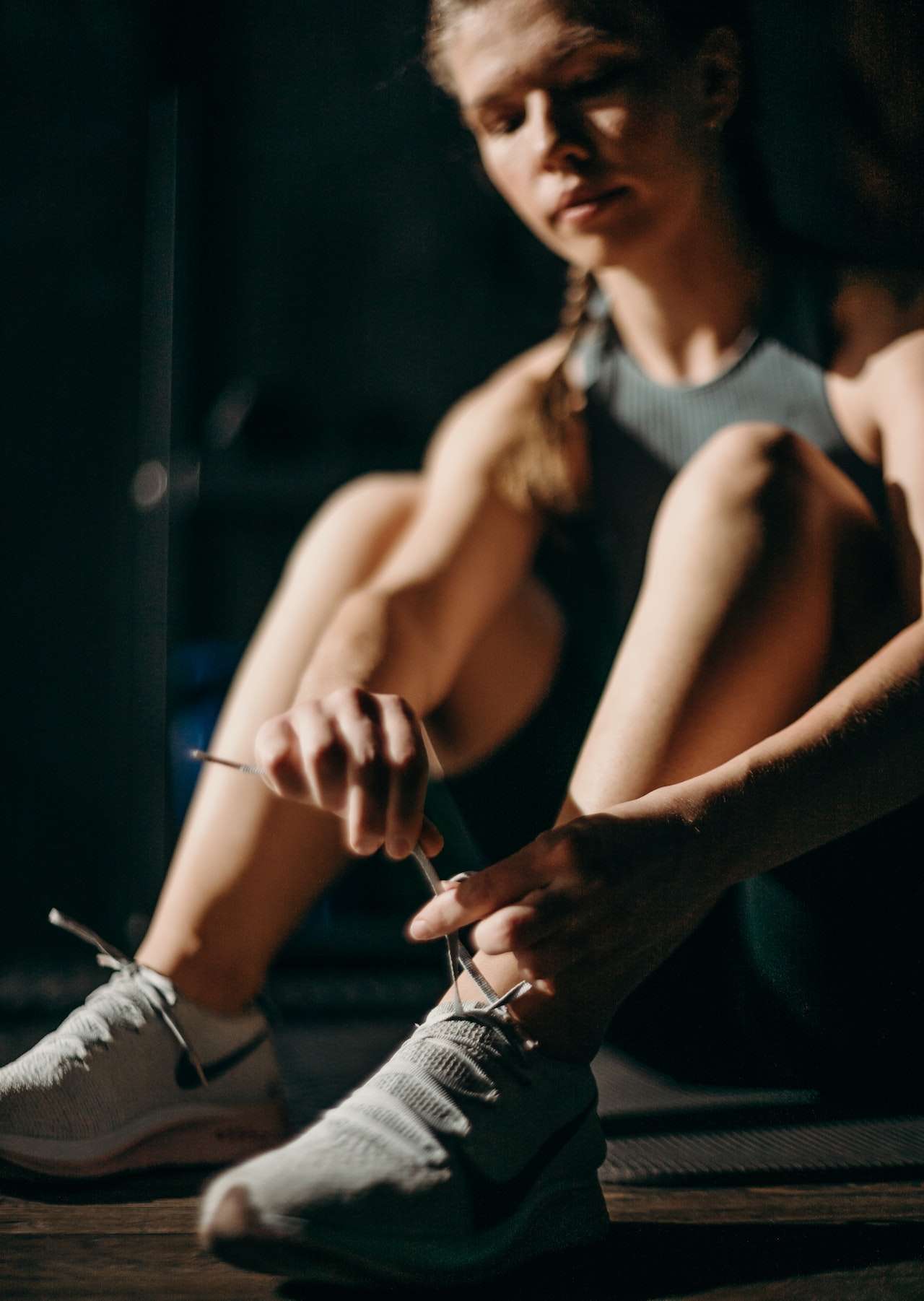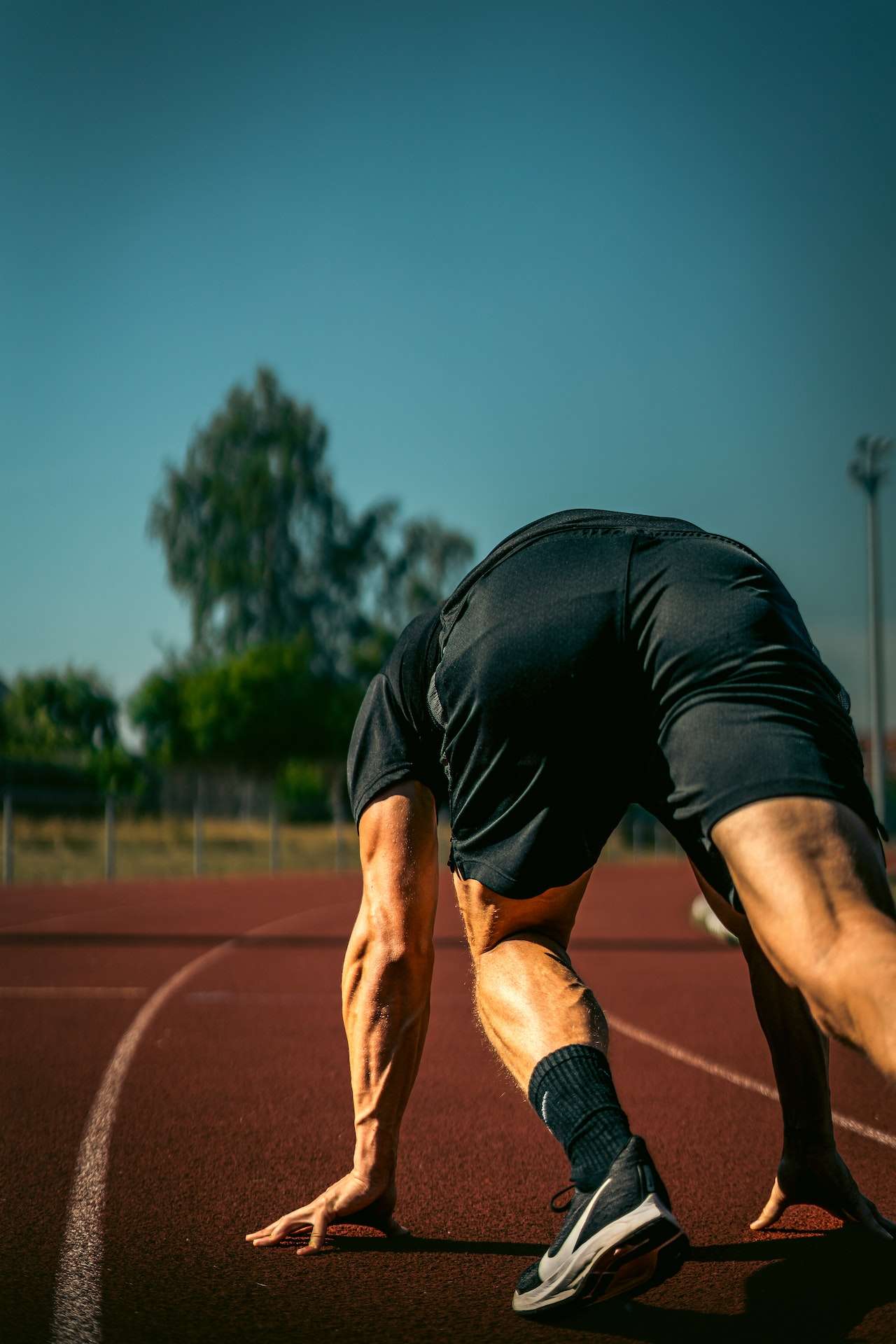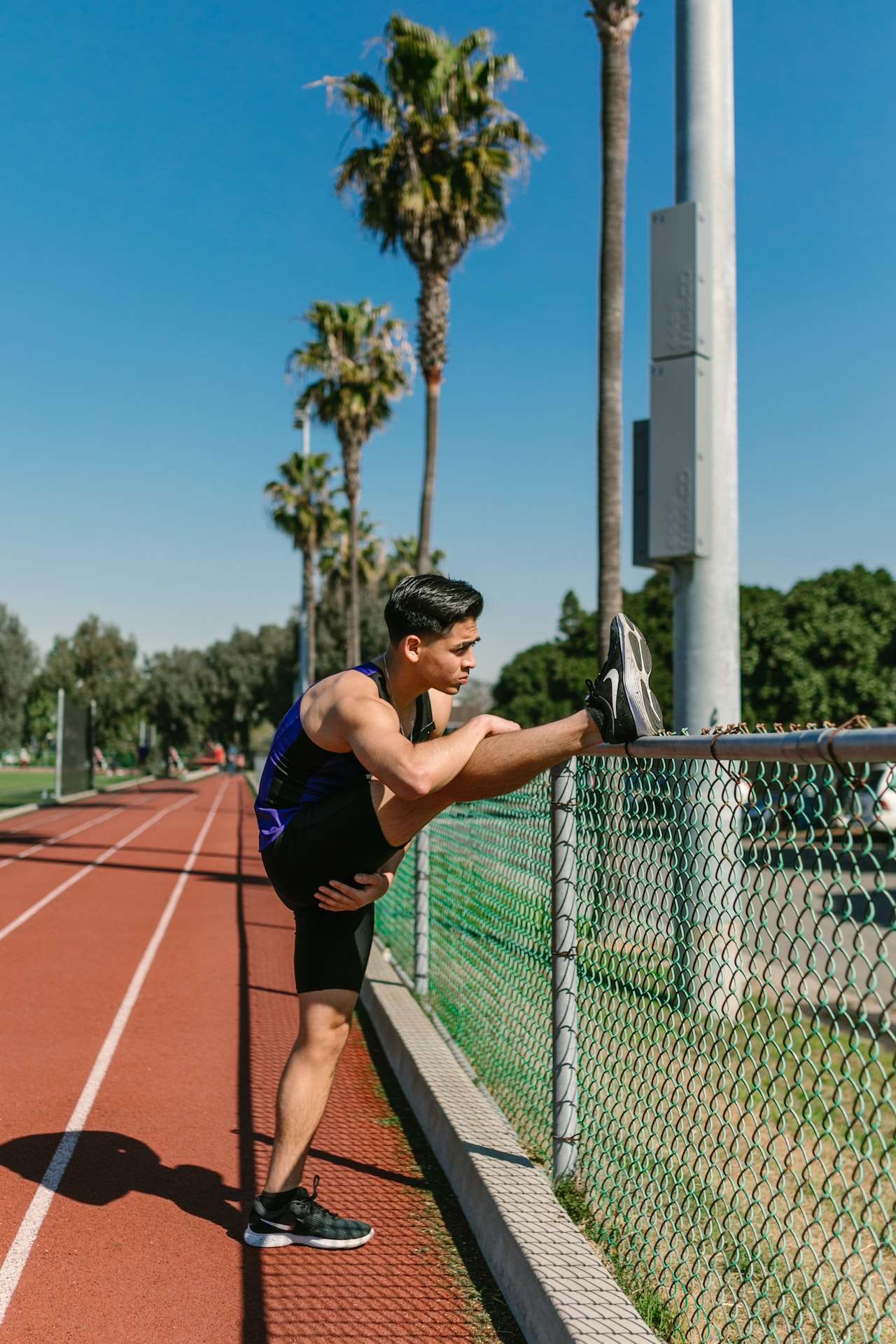|
Have you ever experienced knee pain while running? It can feel like a dark cloud looming over your training, causing you to worry about the toll it might take on your body. But what if I told you there are ways to prevent this pain from happening in the first place? You can be one step ahead of the game with the right shoes and gear to avoid knee pain while running. Like a knight in shining armor, these helpful tools can come to your rescue and save you from unnecessary suffering. For many people, running is essential to their daily exercise regimen. Unfortunately, knee pain can sometimes get in the way of staying active and healthy. That’s why taking proactive steps to prevent this discomfort before it starts is necessary. The good news is that particular shoes and gear can help protect knees against potential injuries while running. Various items on the market, from supportive shoe inserts to elastic knee braces, could help reduce or even eliminate any painful sensations caused by running. So let’s dive into what these items are and how they work so that you can determine which ones would be best for your individual needs and start experiencing relief as soon as possible!
Table of Contents
show
Understanding Knee Pain In RunnersThe irony is that running can be a fantastic way to stay fit and healthy, but it can also lead to knee pain for some of us. Understanding the causes of knee pain in runners is critical to preventing this severe condition. Knee pain when running is widespread; it affects around 30-50% of all runners at some point. It’s usually caused by overuse or trauma. Common causes include running downhill or uphill too quickly, poor posture, weak muscles, and starting to run too hard too soon.
Other potential causes include running on concrete or asphalt surfaces, not warming up properly before exercise, and having had a previous ACL surgery. Anyone who has experienced knee pain while running knows how debilitating it can be – even those just beginning their running journey are vulnerable as they adjust to the physical demands of the activity. Fortunately, plenty can be done to prevent and treat knee pain when running – from strengthening exercises to protective gear like shoes and braces. Taking these measures will help you keep your knees healthy so that you can keep enjoying your runs without worry! Causes Of Knee Pain In Running“Pain is inevitable, but suffering is optional” -Anonymous. This adage applies to running with knee pain, and it’s essential to understand the causes of knee pain to avoid them. Knee pain occurs when various factors, including overuse and improper form or technique, can cause running. When running, Reddit threads on knee pain often point out the poor form as a primary culprit, such as lifting the knees too high, rotating the legs inward or outward instead of keeping them parallel to each other, and not having a mid-foot strike. Other common causes of knee pain include weak glutes or hips that cause instability in the joints during the gait cycle, tight muscles around the knees that increase pressure on the joints during movement, and lack of control over pronation or supination of the feet. Additionally, many runners experience knee pain when squatting or jumping due to poor landing mechanics, which can put unnecessary stress on the ligaments and tendons around the joint. Finally, people who have had recent meniscus surgery may develop knee pain while running because they cannot absorb shock properly through their leg muscles. To prevent these issues from developing into chronic problems, runners need to pay attention to posture and biomechanics while running, avoid overtraining, and take rest days when needed. Furthermore, using proper footwear tailored for your foot type can also help reduce excessive strain on your knees while running or walking. The Importance Of Proper Footwear For Knee Pain PreventionThe right shoe for running can make all the difference in knee pain prevention. It’s true what they say: a stitch in time saves nine. Investing in appropriate running shoes and gear can help you avert a world of potential knee-pain-related issues down the line. When selecting footwear, it’s essential to consider terrain, impact, and frequency of running. For example, if you’re running on soft trails or going downhill, you’ll want your shoes to have more cushioning and stability than running on pavement or flat surfaces. Similarly, if you’re a frequent runner, you’ll need more shock absorption than someone who only runs occasionally.
The same principles apply to other gear like knee braces and compression sleeves: taking into account your individual needs will help ensure you get the support you need while avoiding unnecessary discomfort. And remember proper form! Strengthening exercises like squats and glute bridges can help protect your knees from injury while improving overall performance – not to mention give your legs some much-needed TLC after those long runs! Investing in the right shoes and gear is vital to keeping your knees healthy while enjoying all the benefits of running – so take your time with it! Next up, we’ll explore how to choose the right shoes for any situation – so keep reading if you want to learn more about preventing knee pain when running. How To Choose The Right Running Shoes For Knee PainThe right pair of shoes can be a game-changer when preventing knee pain while running. The antediluvian truth is that improper footwear can wreak havoc on your joints, causing sharp and extreme knee pain when running. If you’re struggling with knee pain when running but not walking, knee pain after running, or any lateral or outside knee pain when running downhill, choosing the right shoes is paramount. So what should you look for? First, if you have flat feet, investing in shoes specifically designed for arch support can help reduce knee pain running down the leg. Additionally, if you’re an avid hiker, look for a sturdy pair of trail shoes that provide ankle and heel support to prevent sharp knee pain when running downhill. Comfort should be a top priority; otherwise, those long runs will become unbearable! So feel free to try on multiple pairs before committing to just one. Ultimately, the correct shoes will provide a cushioning effect and make it easier for your knees to bear the brunt of the impact from each foot strike. The role of insoles and orthotics in knee pain prevention is equally important as selecting the proper footwear. By adding extra cushioning and providing targeted support to critical areas of the foot, these accessories will help protect your joints from excessive stress – allowing you to run further and longer than ever before! The Role Of Insoles And Orthotics In Knee Pain PreventionIt’s a common problem: runners experience knee pain while running, which can be incredibly frustrating. Even worse, you may have invested in a new pair of shoes only to find that your knee pain persists. Could insoles and orthotics provide the answer? It’s time to find out. I remember the day I first experienced knee pain when running downhill. Every step felt like a stab in my leg; it was impossible to ignore it. Desperate for relief, I researched solutions and stumbled across an article about insoles and orthotics’ role in helping prevent knee pain when running. I was intrigued—could this be the solution I had been searching for? So, what is the role of insoles and orthotics in preventing knee pain when running? Insoles are designed to provide extra cushioning for your feet, which helps protect them from any impact when running on hard surfaces or going up and down hills.
Orthotics are slightly more advanced—they’re specially designed to fit into your shoes and help support your feet as you move, providing extra stability while reducing pressure points that can lead to knee pain when running. They can also help with other types of knee pain, such as those caused by running on uneven surfaces or after long periods of rest before starting again. Combining the two—insoles for cushioning and orthotics for stability—you might feel free from knee pain when running! It’s clear that insoles and orthotics play an important role in helping to prevent knee pain when running, but how do you know if they’re right for you? The best way is to speak with a doctor or physical therapist who can evaluate your needs and recommend the best shoe gear or inserts for your specific situation. From there, it’s simply a matter of finding the right size, style, and material that will work best for you. The Impact Of Running Surface On Knee PainKnee pain is a common problem experienced by many runners. It can be incredibly intense when running downhill or on uneven surfaces and can even affect you if you’re running on the treadmill or upstairs. Running is a great way to stay fit and healthy, but it can sometimes take a toll on your knees. That’s why it’s essential to understand the impact of different running surfaces on knee pain. When running downhill, your knees bear the brunt of the force as gravity works against them. This can lead to joint pain, mainly if you’re not used to running down hills or steep slopes. Likewise, running outside on trails also puts extra pressure on your knees as they have to deal with rough terrain and obstacles like rocks and roots, which can cause strain and discomfort. Similarly, when running fast or bending your knees during a sprint, the same forces are at play, which can cause knee pain. It’s clear that there are many factors at play when it comes to knee pain while running – from the type of surface you’re covering to how quickly you’re moving – so it’s essential to understand them all and take precautions accordingly. With the proper footwear, insoles, orthotics, gear, and compression socks for support, we can optimize our performance while minimizing the risk of injury caused by pounding the pavement. Next, we’ll examine how these solutions could help reduce knee pain while running. The Benefits Of Compression Socks And Gear For Knee PainWhen running, knee pain can be a real issue. Running short or long distances can quickly become unbearable and take away from the joy of running. But several types of gear can help reduce knee pain while running. Compression socks and gear are among these options and can reduce knee pain when running. Compression socks and gear provide extra support to the muscles around the knees while you run by pressing against them with a slight amount of pressure. This has been shown to improve circulation in the leg muscles, helping them to recover faster and reducing any fatigue that would otherwise accumulate over the long run.
The compression also helps keep your legs warm, especially for those prone to developing inner knee pain when running downhill or on uneven terrain. Furthermore, compression socks and gear can also prevent knee pain from excessive running, running backward, or cycling, where the knees take an extra beating due to the different muscle movements involved. Medial knee pain can be particularly uncomfortable for runners as it often occurs along the inner part of the kneecap. However, this type of injury can be prevented or even reversed with proper strengthening exercises. Regular strengthening exercises will help build strength in the muscles surrounding each knee to better handle the impact of short-distance runs or longer ones over extended periods. Additionally, these exercises will help reduce any lingering pain after a run since they will aid in reducing inflammation in your lower legs and upper thighs, where most of your body weight is centralized during activities like running. The Effect Of Strengthening Exercises On Knee PainDo you ever wonder why some people get knee pain when running, yet others can run for miles without experiencing any discomfort? It’s a common question, and the answer lies in strengthening exercises that help prevent knee pain. There are many factors to consider regarding knee pain when running. From knee pain when running to knee pain after running going upstairs and knee pain from running, understanding the causes of knee joint discomfort is critical. Additionally, focusing on stretching before and after a run helps warm up the muscles and prevents tightness or stiffness in the joints that often lead to knee pain after running in cold weather or a half marathon. Exercises such as squats, planks, and leg lifts can help strengthen the muscles around your knees, reducing or eliminating knee pain when running. These strengthening exercises also help improve stability around the joints, which is essential for preventing IT band syndrome that causes knee pain when running downhill or even just walking. Strengthening the muscles around your knees reduces wear and tear on the joint, helping keep long-term injuries away while improving overall performance. In other words, it’s not just about fixing existing knee joint problems – strengthening exercises can also be used as a preventative measure to stop them from occurring in the first place. By incorporating these exercises into your routine, you’ll soon notice an improvement in how your knees feel during and after training – no more lingering knee joint pain that takes days! With enough dedication and focus on strength-building exercises, you can say goodbye to nagging aches and pains for good – giving you more freedom than ever to explore new activities without fear of injury. Taking care of your body is all about balance. So while strengthening is vital in reducing knee discomfort, stretching is also essential for remaining flexible and preventing longer-term issues from developing over time… The Importance Of Stretching And Flexibility For Knee PainStretching and flexibility are two of the essential elements for a healthy body, especially when it comes to knee pain. As a symbol of our journey toward greater freedom, stretching and flexibility allow us to explore our potential without fear of injury. When it comes to running, hiking, or any other physical activity involving the knees, stretching can be the difference between feeling great and dealing with lingering pain. Several factors, such as improper mechanics, muscle tightness, excessive weight, or weak muscles, can cause knee pain from running.
Stretching helps keep muscles loose so they don’t strain too much during exercise. Maintaining proper posture while engaging in physical activities involving the knees is also essential. This reduces the stress on our joints and helps maintain balance while running or hiking. Additionally, strengthening exercises focused on hip and gluteal muscles can help relieve knee pain by improving stability and preventing over-straining of the lower legs. Flexibility is also crucial in reducing knee pain because it allows us to move more freely without putting pressure on our joints. For example, if we find ourselves awkward while running or hiking, having good flexibility will help us avoid dangerous falls or slips that could cause severe damage to our knees. And even if we’re engaging in everyday activities like walking up stairs or standing for long periods, increased flexibility can make those tasks easier on our bodies. By incorporating regular stretching into our daily routine – whether we are runners, hikers, or just casual walkers – we can help protect ourselves from unnecessary knee pain and enjoy an active lifestyle with fewer joint issues. Making sure our bodies are adequately prepared before engaging in physical activities is essential for keeping ourselves safe from injury and maximizing our performance each step of the way! The Impact Of Body Weight On Knee PainThe impact of body weight on knee pain is something that can’t be ignored when running. Being overweight or obese puts extra pressure on the joints and bones, making running difficult without experiencing pain in your knees. To understand the effect of body weight on knee pain when running, let’s look at a study that examined the impact of obesity on knee cartilage. The results showed that those with higher body mass index (BMI) had significantly more cartilage damage than those with normal BMI. This suggests that carrying extra weight can increase the risk of developing knee pain when running. The good news is that reducing your body weight through a healthy diet and exercise can help alleviate knee pain when running. A study found that participants who lost an average of 18 pounds over nine months significantly decreased knee pain and improved walking ability compared to those who did not lose weight. Losing excess weight can reduce stress on the knees, making running easier without worrying about painful knees afterward. It’s also important to consider what shoes you wear while running and your gait pattern and stride length. Shoes with adequate cushioning can provide extra support for your knees, while shoes without proper cushioning may leave you vulnerable to painful knees after extended periods of running. Additionally, having an incorrect gait pattern or stride length may put extra strain on your joints, causing them to become stiff and sore after long runs. Taking the time to assess these factors can help prevent further knee pain when running and allow you to enjoy the benefits of running without worrying about painful knees afterward. Conclusion:When preventing knee pain while running, proper footwear and gear are essential. Finding shoes that fit your feet properly and provide adequate cushioning can go a long way in protecting your joints. Additionally, insoles and orthotics can help enhance the support of your shoes and relieve pressure on your knees. Compression socks or tights can also help keep muscles warm and reduce vibrations from impact. Finally, incorporating strengthening exercises into your routine and stretching and flexibility work will help keep your body balanced and less injury-prone. Ultimately, it all boils down to taking care of yourself; with the right equipment and habits, you can “run” circles around the competition. |
